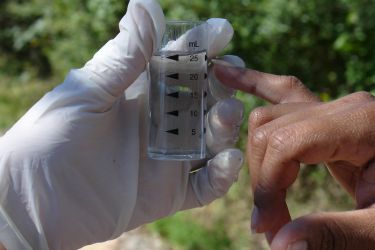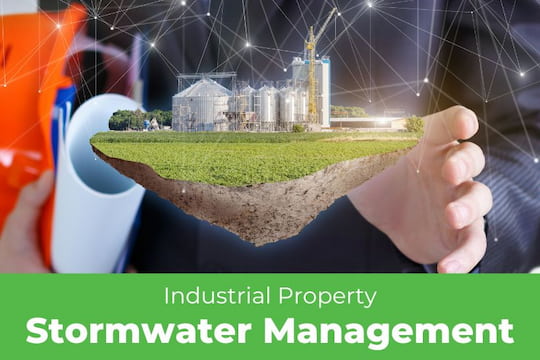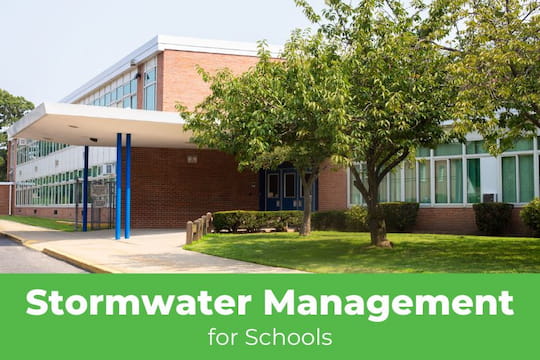Owners of Industrial buildings must manage their environmental impact on several fronts, and stormwater runoff is essential. The rainwater that runs off from industrial sites can carry a variety of pollutants, depending on the nature of the building's operations. Using chemicals, oils, and heavy metals on site can contaminate stormwater runoff and pose a risk to aquatic life, humans, and the environment.
To safeguard public health and the environment, industrial companies need effective stormwater management plans to prevent pollution from entering local waterways. The following 10 points discuss important steps regarding stormwater management for industrial buildings and how it can benefit your organization.
1. Assessing the Existing Risk

To develop an effective stormwater management plan for an industrial building, the first step is assessing and evaluating the site's current risks. For example, investigate the site's stormwater drainage patterns, identify potential sources of spills and residues that could contaminate runoff, and gather water quality data.
Develop a schedule of regular inspections to evaluate the effectiveness of changes and improvements to stormwater pollution management practices over time. A proactive approach to stormwater runoff and pollution can greatly protect the environment and enhance local water quality.
2. Adopt Best Management Practices (BMPs)
The U.S. Environmental Protection Agency (EPA) developed BMP to represent practices that effectively prevent or reduce the amount of pollution generated. In an industrial building setting, BMPs include strategies allowing the stormwater to sink where it falls, reducing the runoff volume. Other BMP strategies involve preventing pollutants from entering nearby waterways and establishing a comprehensive plan for stormwater management.
3. Maintain a Regular Schedule of Inspections
Regular site inspections are crucial to determine whether a building site has areas of excessive stormwater runoff and whether the Water is picking up pollutants. Regular inspections can help determine the best mitigation strategies, whether filtering pollutants out of runoff before it enters local waterways or minimizing sources of pollutants and other resolutions.
4. Educating Employees

Educating employees on the importance of stormwater management for industrial buildings and the risks associated with stormwater runoff can help create a culture of environmental responsibility and reduce the risk of pollution. Employees who have an increased awareness of the impact of their actions on the environment may inspire positive change and ensure their compliance with regulations.
5. Reduce Runoff with Green Infrastructure
Integrating green infrastructure such as permeable pavement and rain gardens into an industrial building's surrounding landscape can reduce the amount of stormwater runoff and promote rainwater infiltration into the ground. Using landscape features to manage stormwater provides natural filtration of pollutants and improves water quality while also enhancing the aesthetic value of the building's grounds. Green infrastructure promotes biodiversity and creates a more natural, healthy environment that enhances employee well-being.
6. Develop a Stormwater Management Plan
Developing a comprehensive stormwater management plan is crucial for developing a methodical process of identifying potential sources of pollution and implementing strategies to reduce stormwater runoff. A plan should also include establishing BMPs, goals with timelines and benchmarks for improving water quality, and processes to ensure compliance with local stormwater management regulations.
7. Consider Ways to Reuse Water
Stormwater is an undervalued resource; finding ways to reuse it can effectively reduce polluted runoff on industrial property. Water reuse minimizes the amount of wastewater that leaves the site. It can also reduce the demand for potable water, cut some costs and improve the industrial building's sustainability profile. Other ways to reuse include collecting and treating the rainwater for non-potable uses, such as landscape water features, which can enhance the property and save money.
8. Collaborate with Local HOAs
Any Homeowners Association (HOA) near an industrial building could become a valuable partner by sharing the responsibility for managing stormwater. HOAs can identify opportunities for shared projects and work with the building management to foster community support and engagement. Working with residents in neighborhood HOAs can also enhance the industrial site's reputation and visibility within the community while helping develop resilient, sustainable neighborhoods.
9. Monitoring Water Quality

Monitoring pollution levels and water quality is essential to identifying issues related to stormwater runoff and assessing the effectiveness of stormwater management measures. It can provide necessary data and feedback about the effectiveness of current measures and identify improvement areas. Monitoring water quality can also ensure compliance with local regulations and help industrial sites take steps to address potential pollution risks and reduce or eliminate pollution incidents.
10. Evaluate and Adjust the Stormwater Management Plan
An industrial building's stormwater management plan should be a fluid document that evolves with data and feedback from monitoring results. Regularly evaluating and adjusting your stormwater management plan is essential for ensuring that it remains effective over time and meets the evolving needs of your organization.
Effective stormwater management for industrial buildings is critical for protecting the environment and public health. By assessing the risks, implementing BMPs, educating employees, and developing a catchall system that includes a comprehensive stormwater management plan, you can reduce the volume of stormwater runoff and prevent pollutants from entering nearby waterways. With regular monitoring and adjustment, your stormwater management plan can remain effective over time and help your organization to meet its environmental responsibilities. Contact CatchAll Environmental to see how we can help.













.jpg)


